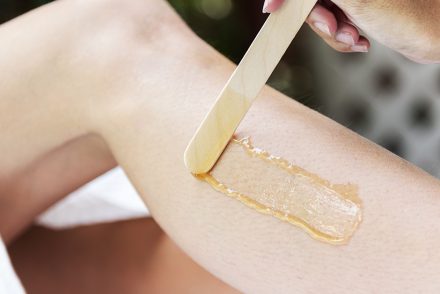Actually, hair doesn’t grow back, it just grows. Cutting or shaving the hair has no effect on its natural growth cycle. Depending on where it is on the body, hair grows about 1 cm per month. It goes through a growth phase, followed by a transitional phase and finally a resting phase before falling out of its follicle. Even though this process happens all over our body, we may not always be aware of it because we don’t really notice the hairs falling out unless we see them on our pillow or in the shower.
A hair cut in its growth phase will simply continue to grow at its usual rate until the end of its cycle. If the hair is cut during its transition or rest phase, it will simply stay at the cut length until it falls out or is replaced by a new hair. It may seem to us that the hair is growing back progressively but in fact, it is simply following its natural cycle until it is replaced by new hair. As such, a teenager who now only needs to shave one side of his face, will not have more hair on that side of his face 5 years later.
The razor cuts the exposed part of the hair. The hair seems thicker because it has been cut bluntly by the blade and lost its tapered end. This can give the impression that the hair is growing back faster and darker.
There is, however, an exception to the “shaving doesn’t make hair grow faster” rule. The rubbing of the razor does create an abrasion that stimulates blood flow (hyperemia), and it is possible that this increased blood flow can help the hair grow. This only holds true, however, in cases where the hair follicle is located in the epidermis (i.e. almost at the surface of the skin) like on a woman’s upper lip for example. As such, a woman who decides to shave the peach fuzz on her upper lip may, in fact, be encouraging hair growth in that area.
Today, rather than shaving, many hair removal methods with lasting results are available to us. With electroepilation and photo epilation, hair growth can be effectively reduced if not completely eliminated. In fact, electroepilation is a highly recommended method to remove facial hair as it requires no shaving prior to treatment.








1 Comment
Makes sense that a hair trimmed or shaved during its growth phase simply keep growing for the rest of its cycle, so that that single hair won’t be as long as it used to be, while a hair cut or shaved during its resting phase simply won’t grow further.
I still have a doubt, yeah of course it also makes sense that the hair that we see reaching the specific length of the old hair is newer hair, basically new water of a river, that is because hair cycle are deferred and we have hair of all “ages” but that also would mean that each hair is at a different length while it seems to me that only a few hairs are much shorter among fully grown ones which all have similar, though not equal lengths.
I read that although hair shaft in itself has no nerves, it is connected to the follicle which has some nerves and is a sensitive organ that uses the strands as device to heighten feeling. It works like a cat whisker but of course to a much smaller scale and extent, as they use them to perceive space and obstacle, which is also in part why it can feel strange the first few times we shave a new zone of the body.
They are called mechanoreceptor and might also carry info like the hair mass – weight. I dunno, though, it’s hypothetical and I’m just curious. It’s normal in a sense, that our body tries to protect us both growing cut hair back and keeping a fixed length under control, when I don’t want it I just shave again :).
The total life cycle of body hair, at least terminal ones, is quite a bit longer than the time needed to reach their full length and break, but maybe allows most hair to catch up and match their full length, but that wouldn’t be exactly telogen, I might be wrong but such hair is still active but just in rest or “standby” to keep a controlled length, but once cut or shaved, the follicle nerves and receptors might sense a change so hair starts growing back again. Not sure, but it’s like a single strand which grow to a cm, but still has life ahead before breaking and shedding, once cut or shaved it might “want” to grow back of the length that has been cut off, just looking thicker in the process ^_^.
Like our eyebrows, they tend to self regulate at a short length, but if we happen to shave them or, if we like to shape them with an eyebrow razor, the cut hair grow back, albeit they generally seem to be slower than elsewhere.
And people who bleach them, if they don’t want or need to trim them in length, generally say it lasts much longer than on hair, with little root regrowth except newly growing darker hair from shedding .
Although it doesn’t influence the shedding rate, otherwise we wouldn’t shed beard and hair strands which are still short but were probably the oldest and the closest to say “goodbye!”.
So I sometimes hypothize the reason for hair growing possibly thicker and/or maybe a bit longer after a while and staying like that for a time I’m figuring out, is maybe the chance of repeated shaving and continuous growth, slightly throwing off the follicle internal “compass”, or an attempt to protect the “fur” :).